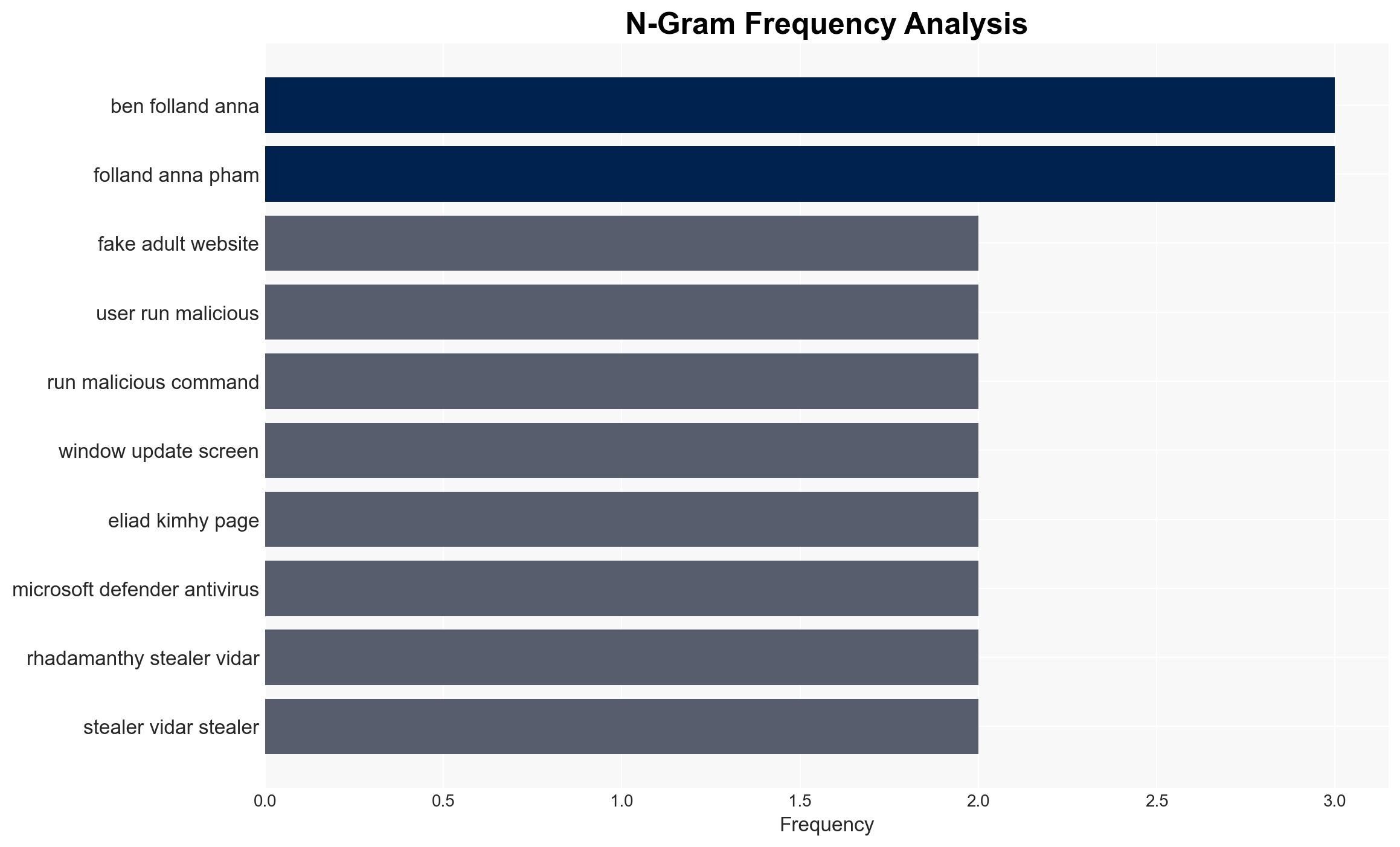JackFix Uses Fake Windows Update Pop-Ups on Adult Sites to Deliver Multiple Stealers
Published on: 2025-11-25
AI-powered OSINT brief from verified open sources. Automated NLP signal extraction with human verification. See our Methodology and Why WorldWideWatchers.
Intelligence Report: JackFix Uses Fake Windows Update Pop-Ups on Adult Sites to Deliver Multiple Stealers
1. BLUF (Bottom Line Up Front)
The JackFix campaign employs sophisticated social engineering tactics to distribute malware via fake Windows update pop-ups on adult websites. The most supported hypothesis is that a Russian-speaking threat actor is behind this campaign, leveraging psychological manipulation and technical obfuscation to achieve their objectives. Confidence level is moderate due to the complexity of attribution and the presence of sophisticated obfuscation techniques. Recommended actions include enhancing user awareness, improving detection capabilities, and collaborating internationally to trace and disrupt the actors involved.
2. Competing Hypotheses
Hypothesis 1: The campaign is orchestrated by a Russian-speaking threat actor aiming to steal sensitive information and credentials for financial gain. This is supported by the use of Russian developer comments and the sophistication of the attack, which aligns with known Russian cyber tactics.
Hypothesis 2: The campaign is a false flag operation designed to implicate Russian actors while being conducted by another group. This is suggested by the possibility of deliberate misdirection through the use of Russian language elements.
Hypothesis 1 is more likely due to the consistent pattern of Russian-speaking cybercriminals using similar tactics and the absence of strong evidence indicating a false flag operation.
3. Key Assumptions and Red Flags
Assumptions include the belief that the presence of Russian language elements directly correlates with Russian actors, which may not always be accurate. A red flag is the high level of obfuscation and use of legitimate tools like mshta.exe, which complicates attribution and detection. Deception indicators include the use of fake Windows update screens and the potential for false flag operations.
4. Implications and Strategic Risks
The campaign poses significant cyber risks, including the potential for widespread credential theft and financial fraud. If linked to a state-sponsored actor, there could be political implications, including increased tensions between Russia and affected nations. Economically, the campaign could lead to substantial losses for individuals and businesses. Information-wise, successful attacks could undermine trust in online platforms and security updates.
5. Recommendations and Outlook
- Enhance user education on recognizing phishing and social engineering tactics, particularly in relation to fake security updates.
- Improve detection and response capabilities for obfuscated malware and legitimate tool abuse.
- Foster international collaboration to trace the origins of the campaign and disrupt the threat actors.
- Best-case scenario: The campaign is quickly identified and neutralized, with minimal impact on users.
- Worst-case scenario: The campaign leads to widespread data breaches and financial losses, with geopolitical ramifications.
- Most-likely scenario: The campaign continues to evolve, requiring ongoing vigilance and adaptive security measures.
6. Key Individuals and Entities
Eliad Kimhy (Security Researcher)
Acronis (Cybersecurity Company)
Microsoft (Technology Company)
7. Thematic Tags
Structured Analytic Techniques Applied
- Adversarial Threat Simulation: Model and simulate actions of cyber adversaries to anticipate vulnerabilities and improve resilience.
- Indicators Development: Detect and monitor behavioral or technical anomalies across systems for early threat detection.
- Bayesian Scenario Modeling: Quantify uncertainty and predict cyberattack pathways using probabilistic inference.
Explore more:
Cybersecurity Briefs ·
Daily Summary ·
Support us





